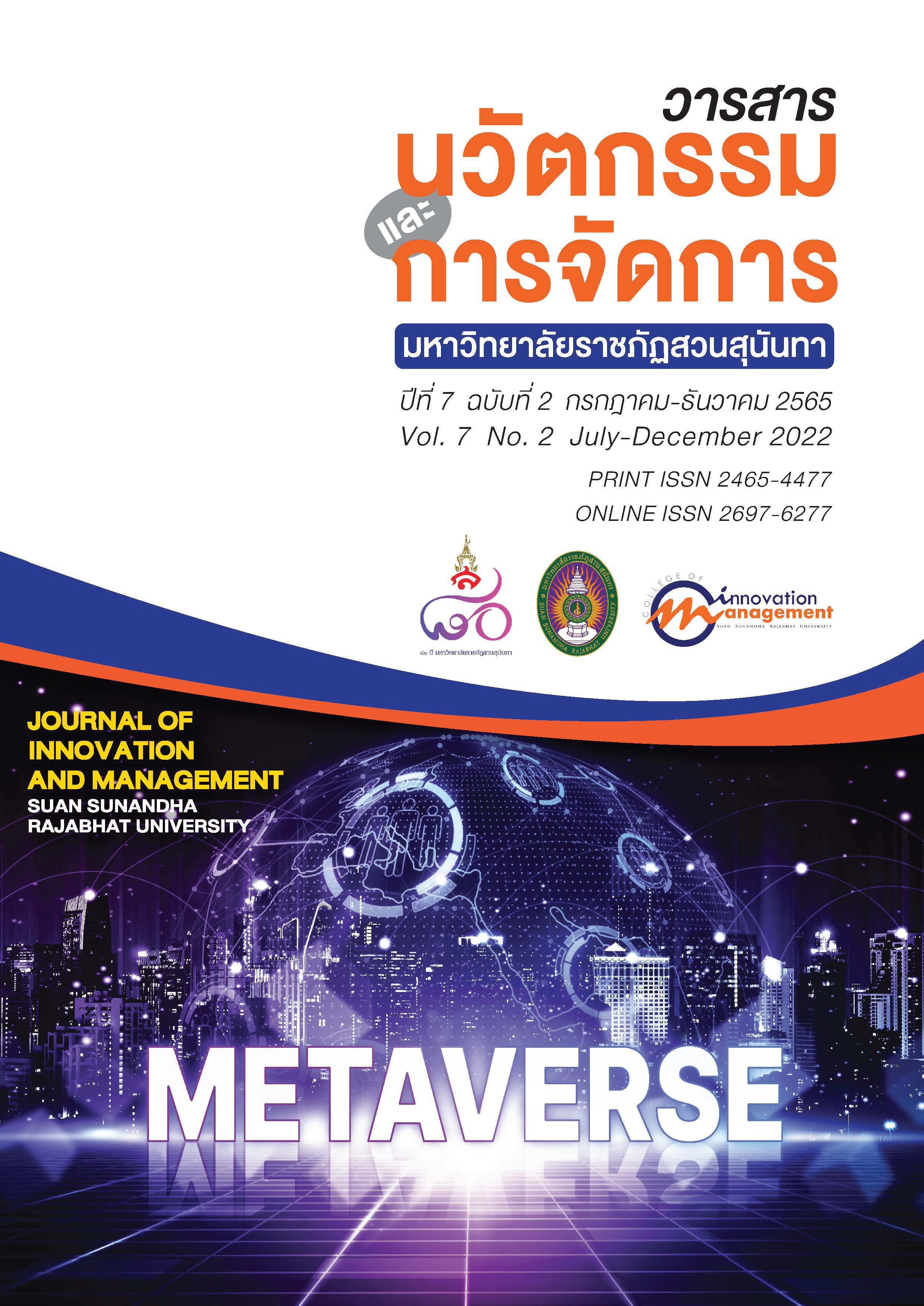สภาพปัญหาและความสัมพันธ์ระหว่างปัจจัยที่เกี่ยวข้องกับพฤติกรรมการรังแกบนโลกไซเบอร์ของนักเรียนมัธยมศึกษาตอนต้นโรงเรียนเอกชนสอนศาสนาอิสลามควบคู่สามัญในกรุงเทพมหานคร
คำสำคัญ:
การรังแกบนโลกไซเบอร์, มัธยมศึกษาตอนต้น, โรงเรียนเอกชนสอนศาสนาอิสลามควบคู่สามัญบทคัดย่อ
การวิจัยครั้งนี้มีวัตถุประสงค์เพื่อศึกษาสภาพปัญหาและหาความสัมพันธ์ระหว่างปัจจัยที่เกี่ยวข้องกับพฤติกรรมการรังแกบนโลกไซเบอร์ของเยาวชนมุสลิม โดยใช้กระบวนการวิจัยแบบผสม ดำเนินการวิจัยใช้ระเบียบวิธีวิจัยเชิงปริมาณ โดยการส่งแบบสอบถามไปยังโรงเรียนเอกชนสอนศาสนาอิสลามควบคู่สามัญในจังหวัดกรุงเทพมหานคร จำนวน 9 โรงเรียนโดยเลือกสุ่มตัวอย่างโรงเรียนแบบเจาะจง และเลือกนักเรียนโดยใช้วิธีการสุ่มตัวอย่างแบบกลุ่ม กระจายในระดับชั้นมัธยมศึกษาตอนต้นครบทุกชั้น ได้ประชากร 621 คน และการวิจัยเชิงคุณภาพ โดยการสัมภาษณ์ตัวแทนครูประจำชั้นและผู้ปกครอง โดยใช้วิธีการเลือกกลุ่มตัวอย่างโดยการบอกต่อ เครื่องมือที่ใช้ในการวิจัย ได้แก่ แบบสอบถามชนิดเลือกตอบและประมาณค่า และแบบสัมภาษณ์ เป็นแบบสัมภาษณ์เชิงลึกแบบมีโครงสร้างชนิดปลายเปิด ผลการวิจัยพบว่า ข้อมูลเกี่ยวกับนักเรียน ข้อมูลเกี่ยวกับครอบครัว ข้อมูลเกี่ยวกับกลุ่มเพื่อน ข้อมูลเกี่ยวกับอิทธิพลของสื่อออนไลน์ และข้อมูลเกี่ยวกับโรงเรียนมีความสัมพันธ์กับพฤติกรรมการรังแกบนโลกไซเบอร์ของเยาวชนมุสลิมอย่างมีนัยสำคัญทางสถิติที่ระดับ 0.05 ครูและผู้ปกครองยังถูกกีดกั้นจากการรับทราบถึงพฤติกรรมการรังแกบนโลกไซเบอร์ของนักเรียน นักเรียนที่มีพฤติกรรมดังกล่าวมักเป็นเด็กที่ขาดการเอาใจใส่จากผู้ปกครองและมีปัญหาครอบครัว ผู้ปกครองไม่มีเวลาให้ แนวทางในการแก้ปัญหานี้คือ การตักเตือนและแนะนำถึงผลและโทษที่อาจเกิดขึ้นจากพฤติกรรมนี้ ส่วนผู้ปกครองควรเพิ่มการเอาใจใส่และให้เวลากับครอบครัวให้มากขึ้น ครูและผู้ปกครองจะสอดแทรกความรู้เกี่ยวกับการป้องกันตนเองในสังคมออนไลน์โดยใช้หลักศาสนาและแนวคำสอนของท่านศาสนดา มูฮัมหมัด (ศ็อลฯ) มาเป็นตัวอย่างและแนวทางสำหรับการประพฤติปฏิบัติตนของนักเรียน
References
Administrator of a charitable Islamic private school. (2013). Characteristics of private Islamic schools. [Online]. Retrieved March, 2021, from: http://islamic-school-admin.blogspot.com/ 2013/04/blog-post.html (in Thai)
Brand Inside. (2017). Stop Bullying Stop online bullying. After Thailand ranked in the top 5 of the world! [Online]. Retrieved March 24, 2018, from: https://brandinside.asia/stop-bullying-thailand-top5/ (in Thai)
Chester, K.L., Magnusson, J., Klemera, E., Spencer, N.H., Brooks, F. (2019). The Mitigating Role of Ecological Health Assets in Adolescent Cyberbullying Victimization. Youth & Society Journal, 51(3), 291-317.
Child and Adolescent Mental Health Rajanagarindra Institute. (2018). Practice manual for prevention and management of bullying in schools. Bangkok: Beyond Publishing. (in Thai)
Cross, D., Barnes, A., Papageorgim, A., Hadwen, K., Hearn, L., and Lester, L. (2015). A social-ecological framework for understanding and reducing cyberbullying behaviors. Aggession and Violent behavior, 23, 109-117.
Department of Mental Health. (2017). Teach children to protect themselves from bullying. [Online]. Retrieved July 11, 2019, from: https:// https://www.thaihealth.or.th/Content/ 39510-teach children to protect themselves from bullying.html (in Thai)
Digital Economy and Society, Ministry. National Statistical Office. (2018) Survey on the use of information and communication technology in the household, 2018. [Online]. Retrieved March 19, 2019, from: www.nso.go.th/sites/2014/DocLib13/ICT/learning technology/2561/ ict61-CompleteReport-Q1.pdf (in Thai)
Johanis, M.A., Bakar, A.R.A., and Ismail, F. (2020). Cyber-Bullying Trends Using Social Media Platform: An Analysis through Malaysian Perspectives. Journal of Physics: Conference Series, 1-5. https://doi.org/10.1088/1742-6596/1529/2/022077
Lekprasern, A. (2015). Violence: An innovative model of reinforcement learning process for the prevention and solution of violence among adolescents and youth in educational institutions. Nakhon Pathom, Faculty of Social Sciences and Humanities, Mahidol University. (in Thai)
Nilan, P., Burgess, H., Hobbs, M., Threadgold, S., and Alexander, W. (2015). Youth, Social Media, and Cyberbullying Among Australian Youth: “Sick Friends”. Social Media + Society, 1-12. https://doi.org/10.1177/2056305115604848
Sittichai, R. (2019). Cyber-bullying behavior of adolescents. Bangkok: Chulalongkorn University Press. (in Thai)
Shuriye, A.O. and Ajala, M.T. (2014). Islam and the Cyber World. Journal of Educational and Social Research, 4(6), 513-520.
Sourander, A., and others. (2010) Psychosocial risk factors associated with cyberbullying among adolescents. ARCH GEN PSYCHIATRY, 67(7), 720-728.
Tudkuea, T., Laeheem, K., and Sittichai, R. (2019). Guidelines for preventive cyber bullying behaviors three southern border provinces students. Journal of Behavioral Science for Development, 11(1), 91–106.
Downloads
เผยแพร่แล้ว
How to Cite
ฉบับ
บท
License
Copyright (c) 2022 วารสารนวัตกรรมและการจัดการ

This work is licensed under a Creative Commons Attribution-NonCommercial-NoDerivatives 4.0 International License.
โปรดดูที่จริยธรรมการตีพิมพ์ https://so03.tci-thaijo.org/index.php/journalcim/Ethics





